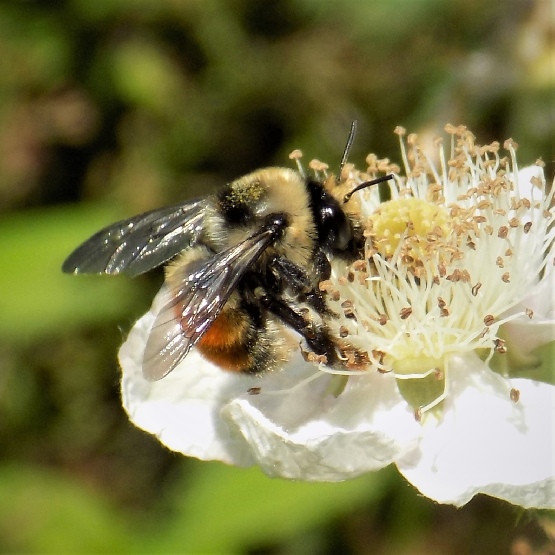Other News
Apr 11, 2024: Community Meeting: Sea Level Rise Adaptation for Outer Bay and Agate Beach Areas on Lopez Island
Mar 11, 2024: Queers in Unexpected Places: Searching for (and Finding) Gender and Sexual Non-Conformity in the Rural and Early PNW
Mar 7, 2024: DRAFT Richardson Marsh Preserve Stewardship and Management Plan Now Open for Public Comment
Dec 5, 2023: County Council Member Jane Fuller and Senator Liz Lovelett to Host Public Meeting on Lopez
Nov 3, 2023: County and Town Send Open Letter to State Officials Regarding Impacts of Poor Ferry Service
Sep 29, 2023: Conservation Land Bank Announces Special Meeting to Discuss Watmough Bay Preserve Addition
Sep 14, 2023: The mobile dental van is coming to Lopez! // ¡La camioneta dental móvil ya llega a López!
Aug 22, 2023: San Juan County Adopts 32-Hour Work Week in the Name of Fiscal Health, Recruitment, and Islander Wellness
May 25, 2023: Recap of Lopez Neighborhood Meeting Regarding the Relocation of Public Works Facilities
May 23, 2023: District 3 Councilmember Jane Fuller Opens Office on Lopez and Hosts Community Conversation
Apr 17, 2023: Give Lopez Starts April 17th - A two week fundraiser benefiting 15 Lopez Island Non-Profits
Sep 22, 2022: Interim Watmough Preserve Addition Stewardship and Management Plan Now Open for Public Comment
Pollinator conservation
Apr 14, 2023
By Kwiaht
Maintaining pollinator services on Lopez is all about protecting nesting habitat for our wild bees, and avoiding the use of pesticides - not importing more domestic bees.
At Kwiaht we receive a lot of questions each year about bees and other pollinators in the islands. This year, with support from the San Juan Island Community Foundation, we have published a series of one-sheet briefing papers on recognizing wild native bees and inviting them to nest in your garden. We have also prepared two self-explanatory slideshows on the islands’ wild native pollinators, and how they are adapting how climate change: the cooler, wetter and windier early spring weather pattern that so often coincides with the first flush of cherries, plums, and native flowering currants. These publications and slideshows are free to download and to share.
Six key takeaways from our research, and research elsewhere on wild pollinators:
1. In the islands, we have inherited a diverse wild native pollinator community that includes at least 91 species of bees and more than a hundred species of “flower flies†or “hoverfliesâ€. Most of our wild bees are “solitary†and make simple individual nest tunnels in undisturbed ground.
2. Most wildlands and gardens in the islands are still pollinated mainly, if not exclusively, by wild native bees and flies. Nationwide, honeybees are only needed for the pollination of large-scale monocultures, especially in areas where mechanical cultivation, pesticides and herbicides have already degraded wild pollinator communities.
3. As our regional climate shifts to stormier winters and drier summers, we expect that native flies will account for a greater proportion of pollinator services, especially in early spring.
4. Commercially available domestic bees such as honeybees are unnecessary for maintaining pollinator services in the San Juan Islands. There is growing evidence that they displace native pollinators, and can spread viral diseases that kill native pollinators, such as Deformed Wing Virus.
5. Honeybees in particular require housing and feeding, while wild native bees only require appropriate places to build their nests such as rockpiles, rockery walls, brushy uncultivated patches, and hedgerows. Inviting native bees to nest inside your garden is the most economical and sustainable way to maintain pollinator services in the future.
6. The greatest threat to wild native pollinators in the San Juan Islands is the application of pesticides to buds, flowers, and soils, which poisons pollen and can infiltrate ground nests of bees. Pesticide sprays on aphid infestations kill flower-fly larvae that eat aphids, like ladybugs. Pesticide-contaminated insects are also a threat to the islands’ bats, which play a major role in suppressing moths and other garden pests.
Six key takeaways from our research, and research elsewhere on wild pollinators:
1. In the islands, we have inherited a diverse wild native pollinator community that includes at least 91 species of bees and more than a hundred species of “flower flies†or “hoverfliesâ€. Most of our wild bees are “solitary†and make simple individual nest tunnels in undisturbed ground.
2. Most wildlands and gardens in the islands are still pollinated mainly, if not exclusively, by wild native bees and flies. Nationwide, honeybees are only needed for the pollination of large-scale monocultures, especially in areas where mechanical cultivation, pesticides and herbicides have already degraded wild pollinator communities.
3. As our regional climate shifts to stormier winters and drier summers, we expect that native flies will account for a greater proportion of pollinator services, especially in early spring.
4. Commercially available domestic bees such as honeybees are unnecessary for maintaining pollinator services in the San Juan Islands. There is growing evidence that they displace native pollinators, and can spread viral diseases that kill native pollinators, such as Deformed Wing Virus.
5. Honeybees in particular require housing and feeding, while wild native bees only require appropriate places to build their nests such as rockpiles, rockery walls, brushy uncultivated patches, and hedgerows. Inviting native bees to nest inside your garden is the most economical and sustainable way to maintain pollinator services in the future.
6. The greatest threat to wild native pollinators in the San Juan Islands is the application of pesticides to buds, flowers, and soils, which poisons pollen and can infiltrate ground nests of bees. Pesticide sprays on aphid infestations kill flower-fly larvae that eat aphids, like ladybugs. Pesticide-contaminated insects are also a threat to the islands’ bats, which play a major role in suppressing moths and other garden pests.

A Black-Tailed Bumblebee, one of the islands' most widespread and efficient wild native pollinators.

